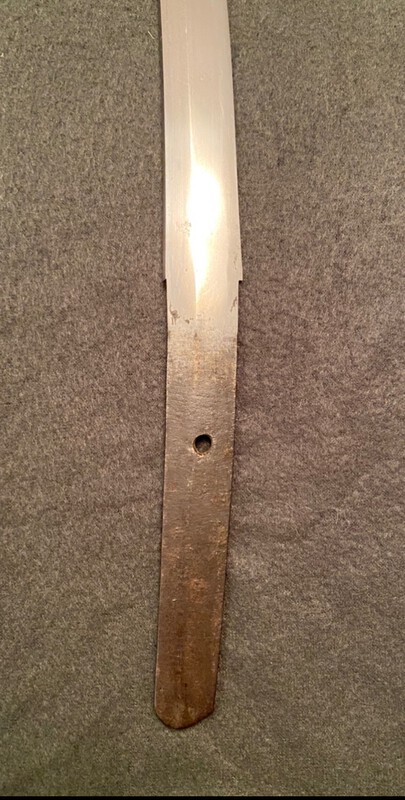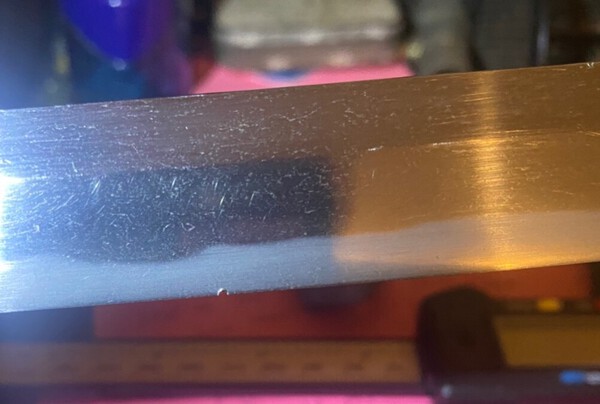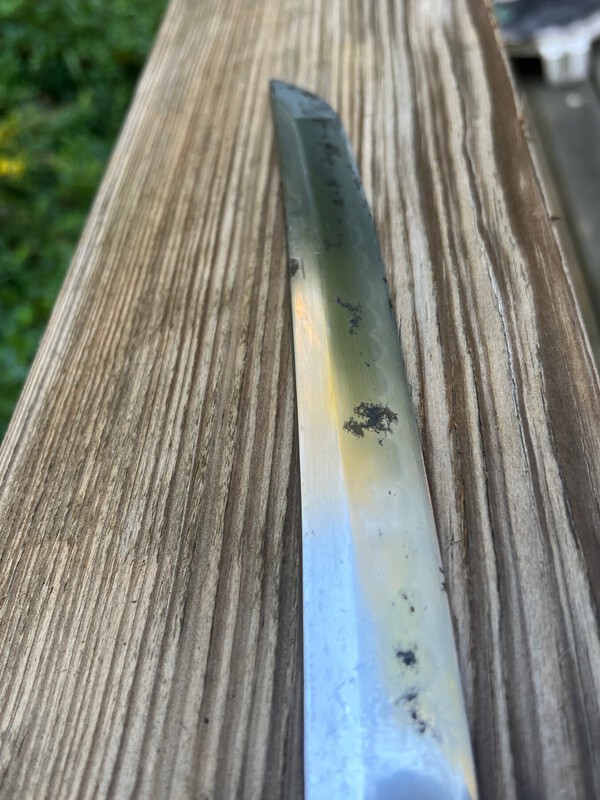Search the Community
Showing results for tags 'katana'.
-
I know we have a separate topic of Show Us Your High Class Gunto. But many WW2 swords smiths have made nice traditionally made blades from 1876-1945. With members like "mecox" doing spectacular research on WW2 sword smiths, I think this new topic could throw some light on some sword smiths and their work, and hopefully kindle interest in the blade, not just the Koshirae. You never know, we may find some rare or poorly documented swords and smiths. If your posts could be supported by photos, oshigata, descriptions, and any other relevant information, I think a great reference topic could be established. OK, so here is a contribution to kick things off.... A (Mano) MASAYASU medium-grade grade gendaito, no date no stamps, in early '98 mounts. Mei reads Bishu ju Masayasu. The hada is flowing masame/mokume, with choji gunome midare hamon. I only hope there are better photographers out there! So I would ask the forum administrators to let this thread run, and see where it goes, a lot of time is spent discussing Chinese fakes, and machine made Showa-to, and I am sure this topic will help raise intertest in Gendai. P.S. Hamon looks Suguha in photos, but the Keisho polish disguises the features, easily seen in the hand.
-
https://www.ebay.com/itm/355506420160 I'm currently selling this Gendaito I bought a while ago. Price is negotiable. Gendaito Katana, Signed Yoshichika (may 1944). This is a Gendaito made in May 1944 by Yoshichika: the fittings are combination of traditional koshirae and Gunto koshirae, this is an arsenal sword. The tsukaito is lacquered silk and fits loosely, The tsuka has some rattle Yoshichika was known for using unorthodox materials for his blades, this one appears to be made from a modern steel as opposed to Tamehagane, which isn't unusual for swords of this era, but is definitely made through traditional methods. The hamon is VERY light and difficult to see unless under very specific lighting due to the polish variation, but it is definitely there with a suguha hamon. The koshirae are an interesting mix of Traditional Edo Era style fittings with elements of Imperial Japanese Gunto fittings: Primarily with Gunto style Menuki and Kashira. Additionally, and interestingly, the Menkui are placed in the tachi-style top right bottom left configuration, seen often on arsenal swords and gunto. Additionally, the Naval Knot on the tsuka is the right hand side. All of this points to the sword being worn tachi/gunto style with the blade facing down, yet the sword is fit with a standard Uchigatana style saya to be worn with an Obi, facing up. The saya is a standard black lacquer with Buffalo Horn fittings on the bottom and top for stability. No major cracks or forging flaws. The blade is healthy and heavy without much Sori. STAND NOT INCLUDED Please forward me any questions Nagasa 27 inches Tsuka 10 inches Will be shipped with a free sword bag and the original registration license. The blade will be be oiled before shipment.
-
Hello fellow nihonto enthusiasts! I acquired this sword fairly recently from an ebay auction. I know most of you will be prepared for the worst due to the mention of ebay, but I am happy with the sword overall and the price I paid given it's mumei. The seller stated it's supposedly from the Edo period. I'm guessing late Edo based on the nakago patina. I was hoping some of you would be able to tell me a little bit more about it. I know I would need to send it to shinsa for an evaluation, but short of that, any information would be greatly appreciated. Mostly, I would like to know if I'm correct about the late Edo period assumption. If I need to retake pictures, that is no problem. I'm definitely not the greatest at photographing nihonto or photography in general. Thank you in advance! Please find the google photos link below. https://photos.app.g...gl/mPtfkYsDLAMC2syK9
-
Hey guys, Posting this for a friend who is not tech savvy. He wants to know who this smith is. He believes it to be a gendai smith by the name of Okano Mitsuhiro. I attempted to look them up and found nothing. Anyone got a lead on this smith or has he discovered one that's fallen out of the meikan? Also, what kamon is that? It appears to be cast into the piece, rather than attached like a usual one. 27" nagasa with an attractive sanbonsugi hamon. Very minty Type 98 mounts. Thanks!
-
https://www.ebay.com...icSeller=1&_saslop=1 Any questions, let me know. --Matt St. Croix Blades 715-557-1688 phone/text
-
Posting this somewhat in reference to an earlier post where I had meant to add additional context and images, but a vacation lead to me losing track of time. Here is my O-katana. It’s an aggressive shinshinto piece, signed Fujiwara Kiyondo and dated 8th month Bunkyū 2. The sword is not papered and the mei is not proven, this blade was discovered in poor condition gunto koshirae at an estate sale. It measures 38.25 inches overall with a 29.2” nagasa. Width of 1.4” at hamachi and 0.88” at yokote, though the yokote is obscured. I believe, based on the placement of the mekugi-ana and other clear indicators that the nakago is not ubu (though I am an amateur). There is around 2cm of ububa on the blade. What little of the hamon is visible is quite pleasing to the eye and I am queued with a few togishi. I am more interested than anything in polish for study and preservation of the sword, which seems to have lived a somewhat difficult life.
-
Komihara Katana for Sale, a beautiful koto sword. Specifications: Sori (Curvature): 0.8 cm Hamon (Temper Line): Suguha, characteristic of Ko-Mihara school Blade Length: 60.8 cm Period : Nanbokucho (650 years ago) Province : Bingo 備後 Certificate : NBTHK Tokubetsu Hozon Token Koshirae SOLD You can see more pictures or videos on my website. Don't hesitate to send me a message if any question
-
New sword listings from St. Croix Blades: https://stcroixblade...hop/Japanese-swords/
-
Will be in Tokyo, first time end of this month, always wanted a Katana, looking at a nice papered blade. katana [higo-no-kami kuniyasu] (sintou jou-saku) (oh wazamono) Sintou NBTHK Tokubetsu Hozon Paper ¥ 700,000(JPY) Item number: esg2310-1102 Category
-
Hello everyone I am looking to buy a hozon or tokubetsu hozon katana with the price range between 3000-5000 pounds. If possible I would prefer it to have a shirasaya and koshirae but I understand that may be a big ask for the price range so if anyone has koshirae would be fine. I would hope for the nagasa to be something between 67-72cm and the Sori to be something between 1-2 cm. No other request and I am very open minded. I’ve already looked at several websites but I just wanted some options as well Many Thanks Bill
-
Hello! I recently obtained a Katana and was wondering if anyone had any information to spare on it. It is signed as Hirokuni from Bushu. I believe it is a Shinto Era blade.
-
I bought this 1944 Gendaito from a friend in Tokyo, and I'm hoping to have a new tsuka refit. I bought this sword for formal tameshigiri, however, the tsuka is loose and cracked in a few places. Additionally, I'm not a fan of its black, lacquered tsukaito or the Gunto Kashira. I was wondering if anyone knew of someone (preferably in the U.S./TX) where I can have a new tsuka fit. Thank you!
- 11 replies
-
- katana
- restoration
-
(and 1 more)
Tagged with:
-
I just recently received an addition to my small collection. I thought the members here might enjoy seeing it. Katana in Shirasaya with Koshirae NBTHK Tokubetsu Hozon Token (May 23, 2019) Inscription: Mumei (千代鶴守弘 Chiyotsuru-Morihiro) Sayagaki: Verso: Unsigned Son of Yamashiro Rai Kuniyasu, Chiyotsuru Morihiro, made this. Masterpiece (with) Jiba in excellent condition. Length of 2 shaku, 2 sun, 6 bu. Appraisal value of 200 gold “mai” (Kaō) Hon’a (possibly the 19th generation Hon’ami Chumei (忠明) or Kochu (光仲)? Recto: “Den” 8th Head of Numazu Domain Lord Mizuno Tadanori carried this sword Storehouse 1, (i) #3 An 1709 Origami from Hon’ami Kōchū attributes this sword to Chiyotsuru Morihiro’s father Rai Kunimitsu: Cover: Appraisal document of Rai Kunimitsu Contents: Rai Kunimitsu Genuine Length: 2 Shaku, 2 Sun, 6 Bu Shortened, unsigned Appraisal Value: 20 Gold “Mai” Hōei 6, year of the Ox (1709) January 3rd (Kaō) Hon’a (Hon’ami Kōchū 本阿弥光忠) Sword Details: Polished Habaki: double-layered gold habaki Nagasa: 2 shaku, 2 sun, 6 bu (68.5 centimetres or 26.97 inches) Sori: 1.2 centimetres or 0.47 inches Mekugi-ana: 2 holes with a third that has been plugged Width at Hamachi: 2.98 centimeters or 1.17 inches Width at the tip: 2.22 centimetres or 0.87 inches Thickness: 0.93 centimeters or 0.37 inches Weight: 780 grams Era: Nanbokucho period, from Bunna (1352) to the early Muromachi period, Ouei 1394 Blade Description: The blade is O-suriage (greatly shortened) and mumei (unsigned). The blade has a deep sori (curvature) with moderate width and thickness, and an elongated kissaki. The Jigane features a well-compact koitame hada (small wood grain pattern) with o-hada (mixed large grain) and clear nie (hardened steel granules). The Hamon is bright and refined ko-midare (small irregular) hamon with active ko-ashi (small feet), and the blade exhibits sunagashi (sand-like patterns) and fine lines of nie. The Boshi has a large notare (turnback) with a rounded tip. Information on the swordsmith: The name Chiyotsuru is derived from Chiyotsuru-maru. Chiyotsuru was the child of Echizen swordsmith Yamashiro Rai Kuniyuki. The first-generation Kuniyuki came from the Rai school and migrated to Echizen, residing in present-day Takefu City or Tsuruga City in Fukui Prefecture. The extant works are limited to the two generations of Kuniyuki, Morishige, Morohiro, and the contemporaries of Kuniyuki, Shigekuni and Yukiyuki. The name Chiyotsuru has long been popular for celebrations and ceremonies. Chiyotsuru-mori Hiro had four generations of smiths with their respective inscriptions. The first generation was active in the mid-Nanbokucho period from Bunna (1352) onwards, the second generation in the late Nanbokucho period from Shitoku (1384) onwards, the third generation in the Oei period of the Muromachi era from Oei (1394) onwards, and the fourth generation in the Kajō period of the Muromachi era from Kajō (1441) onwards. Their styles include those reminiscent of Mino swords and those incorporating the Soshu style. Koshirae: Tsuba: A red copper base with high relief carving of waves and a family crest on the mimi (ear) and chrysanthemum flowers on the surface, decorated with coloured enamel in gold. Fuchi kashira: A silver base with high relief carvings of Hidari-mitsudomoe (three comma) mon and waves. Saya: A pear skin-textured saya with black lacquer inlaid in a belt-like pattern. Menuki: Made of copper, featuring high relief carvings of three Hidari-mitsudomoe mon, decorated with coloured enamel in gold.
-
Hello there! I am new in this circle and need your help. I consider the purchase of a contemporary Tachi (Tokubetsu Hozon Token) in shirasaya and consider having it fitted with a high grade koshirae. I own a pair of nice Manuki (photo) that inherited from my father that I would like to use. He also left a collection of Tsuba, but rather than getting one of those refitted I consider having a new one made. All of this work should be executed in Japan, as the Tachi is presently still there. My questions is: can you advise me of a good contact to get started with this project and what would be the price range for a complete koshirae? Appreciating any helpful pointers. Cheers!
-
Hello. I would appreciate anyone's help with the translation of this katana. Thank you in advance. --Matt
-
I have a friend and fellow ITK member here by the name of Jim Tobin. He is not very tech savvy and has asked me to post this here on his behalf for a translation. Any opinions/translations are welcome. I believe the blade is a WWII blade judging by how chippy and rushed the signature looks. This is unfortunately the only picture he was able to get me. Thanks guys! ~Chris
-
Period: Late Edo (around 1858) Certification: Old Tokubetsu Juyo Token (Green) Inscription (front): Bizen no Suke Munetsugu Yaki no Dōshū Ichirō Kaji Inscription (back) : Ansei Gonen Nigatsu Hi Details: Blade Length: 71.6 cm Curvature: 2.1 cm Motohaba (Base Width): 2.9 cm Motokasane (Base Thickness): 0.7 cm Sakihaba (Tip Width): 1.9 cm Sakikasane (Tip Thickness): 0.5 cm Weight: 651 g Features: Sugata: The blade features a Bizen Den style, renowned for its wild patterns. Hamon: The tempering line showcases Choji Gunome Midare, a leading characteristic of the Bizen tradition, intertwined with Sunagashi (streams of hard, white martensite in the hamon) and crisp nioi lines. Very bright and clear Nioiguchi. $5500
-
Period: Early Edo (1658-1673) Certification: Tokubetsu Kicho token certificate Inscription: Hizenkoku Kawachi no kami Fujiwara Masahiro Details: Blade Length: 71.0 cm Motohaba (Base Width): 3.1 cm Sakihaba (Tip Width): 2.1 cm Motokasane (Base Thickness): 0.8 cm Sakikasane (Tip Thickness): 0.6 cm Weight: 764 g Features: Sugata: Slight curve, shinogi-zukuri, iorimune Kissaki: Ko-kissaki, round with thick return Hamon: Chu-suguha with good nioiguchi and bright nioi line Jihada: Ko-itame hada, well-grained with ji-nie and visible chikei Price : $3100 + $50 Shipping You can see more pictures and details on my website. Or you can also contact me :). Tried to edit a design to give as much info as possible at one time.
-
I recently acquired this blade in Type 98 Gunto koshirae. Seems to be out of polish but in decent condition, the tsuka has some damage. The previous menuki had been nearly pulverized, so I replaced it with a section of chopstick for the short-term. I also added the tassel. Otherwise this is as-found Shinogi Zukuri Mumei Hamon: Notare Sori: Torisori Mune: Iorimune file marks: Kiri? nakagojiri: kurijiri boshi: notare komi? Nagasa: 60.3cm (23.74 in) total length: 75.5cm (29.7 in) sori: 2cm (0.787 in) Motohaba: 28.5mm Sakihaba: 20mm motokasane: 6.3mm sakikasane: 4.7mm Kissaki: 31.9mm I’ve got a low budget, and a thing for mumei over gimei. I enjoy the more dramatic Sori than my other swords. I also love the ww2 koshirae, and have always wanted a sword in gunto fittings. I believe the blade to be suriage and probably koto. trying to get good shots of the hada but it’s hard to see and my photography skills and equipment are still greatly lacking. Sharing for opinions, and discussion - to learn what I can from my new sword. I would love a closer estimate on its possible age Also, the sarute is a fairly simple metal band. Could I hypothetically purchase a more decorative gunto sarute and replace it? Or is that probably not worth it? more photos in additional comments* Thanks for reading, Cheers, -Sam
-
I bought this navel sword about a year ago at a local antique store. It has an engraved tag glued to the saya. When I first saw it, I assumed it was just something that a former owner attached because he thought it sounded cool. I realize this is just wishful thinking on my part, but I wondered if it was more important than that. I was thinking that it could have been possible that this sword could have been a batch of swords that the US navy presented to dignitaries and higher ranking officers on the day of the signing of the surrender on the Missouri. The date is wrong and it was installed "upside-down" the way westerns would have mounted a sword. But I'm sure the navel officer in charge of this project could have screwed that up on his own. So my question; is it possible that the US Navy could have taken a batch (20? to 50?) surrendered Japanese swords and presented them to people present at the signing of the surrender on Sept 2nd, 1945? Has anyone heard of such a thing, or am I just wanting to believe it's true? Thanks, Phil
-
Hello all! first post. I’ve been hanging out on a few Facebook pages for Nihonto and get great advice. Ray singer has been particularly helpful. Recently, I’ve gotten a interesting sword from a local to me auction. I’ve gotten opinions of everything from 1500s to oil quenched showato. I’m happy with whatever it is but being a newbie… I’m trying to understand what I have. I bought several books from Martin sesko but I’m still learning. There are no stamps anywhere on the blade whatsoever. Like I said you may have seen this on FB, but I’m posting here in hopes the images upload in higher quality. Thank you for your time.










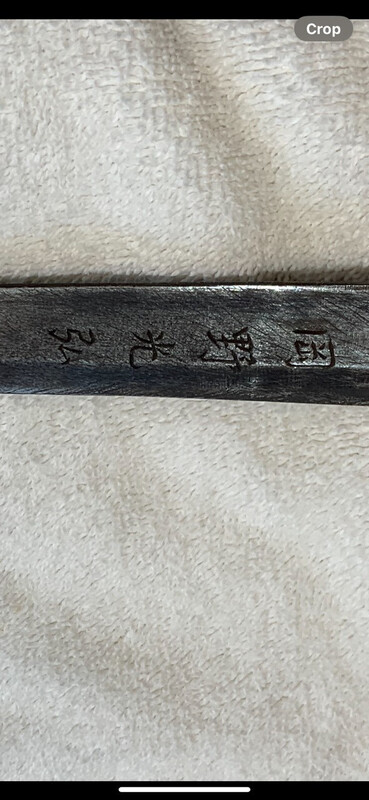

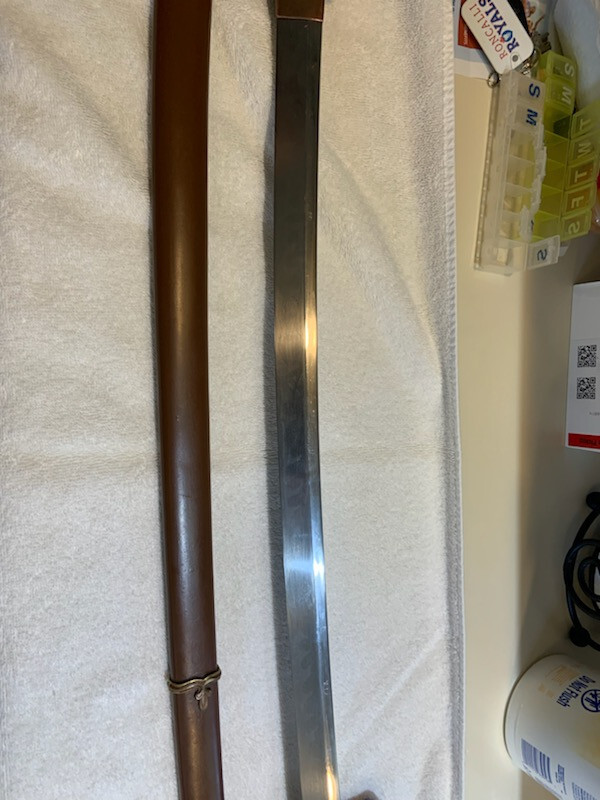




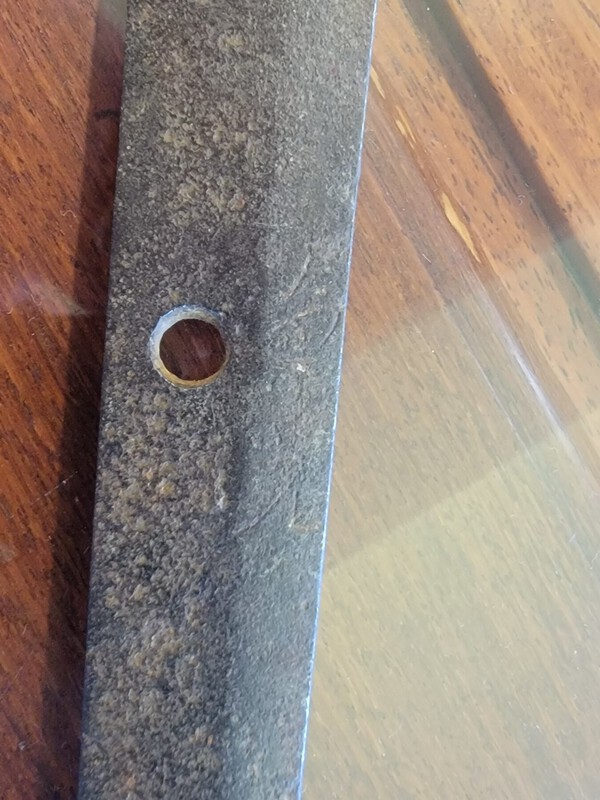


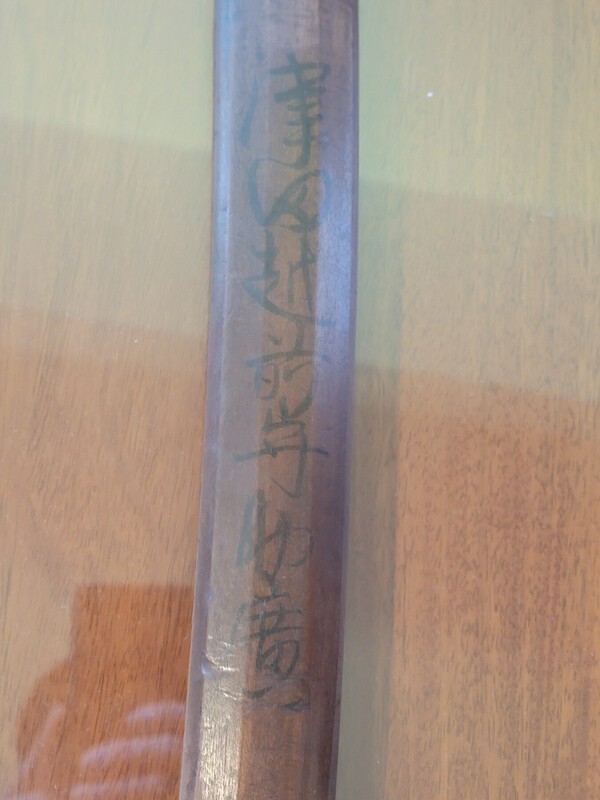
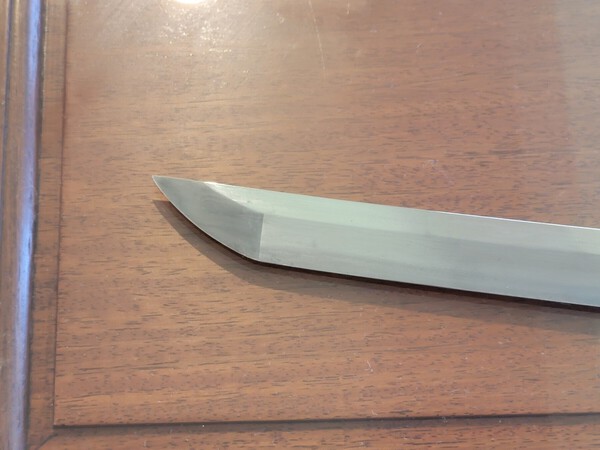



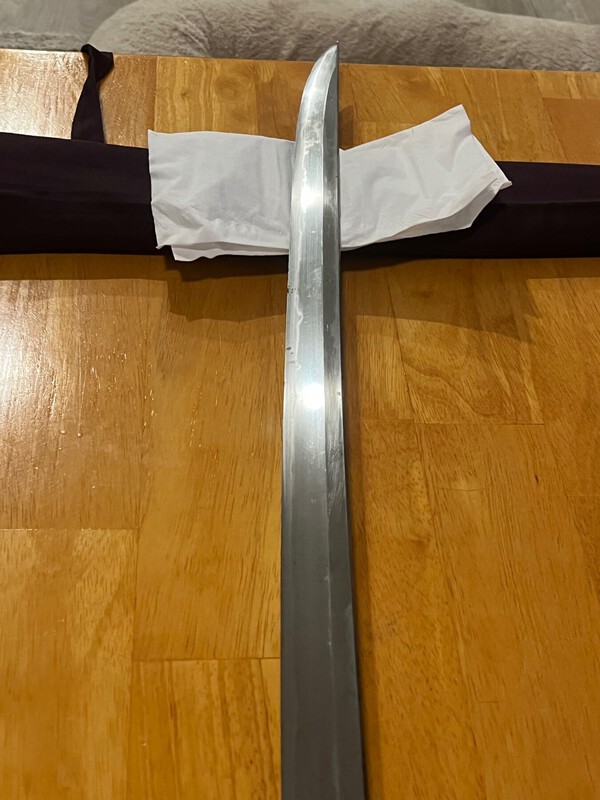


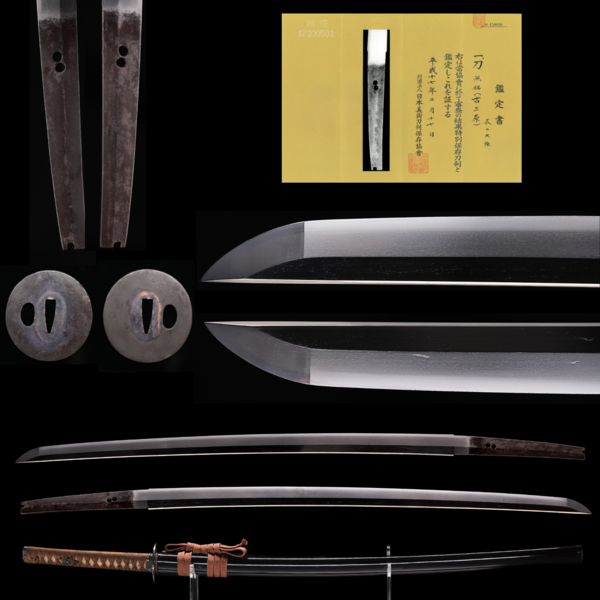
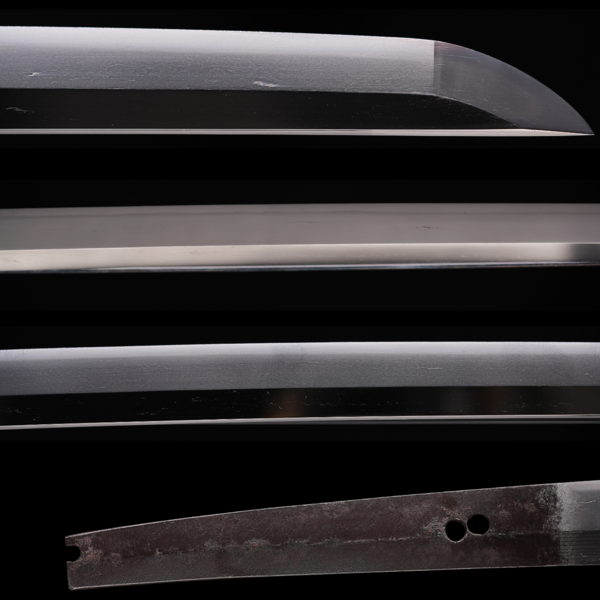
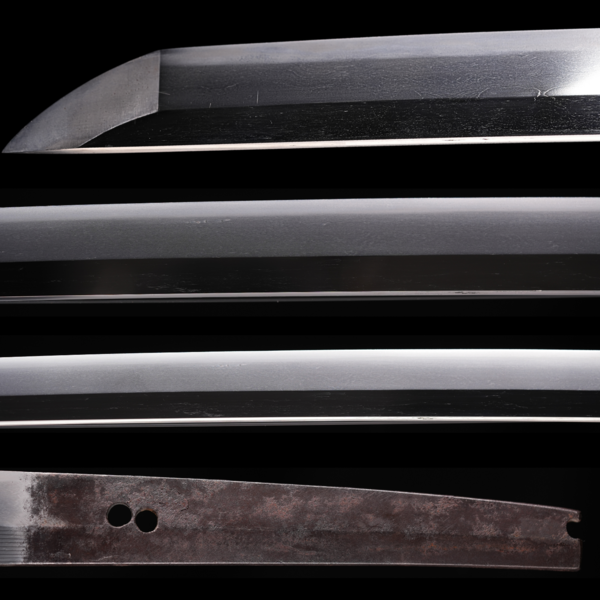

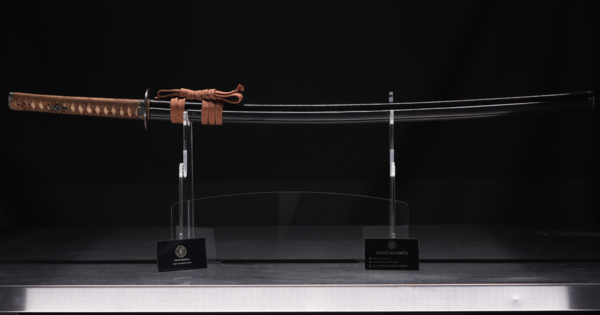
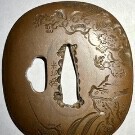





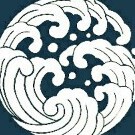


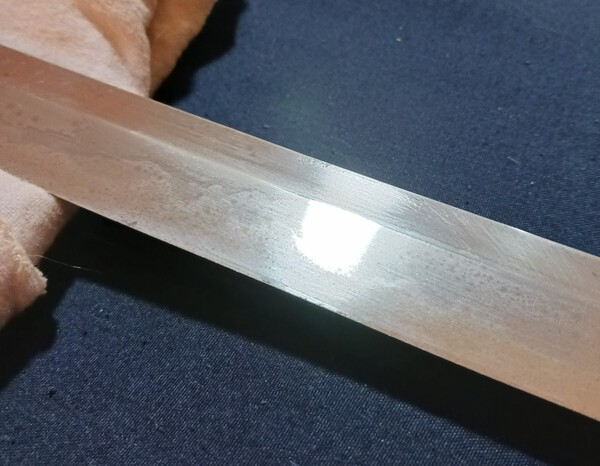
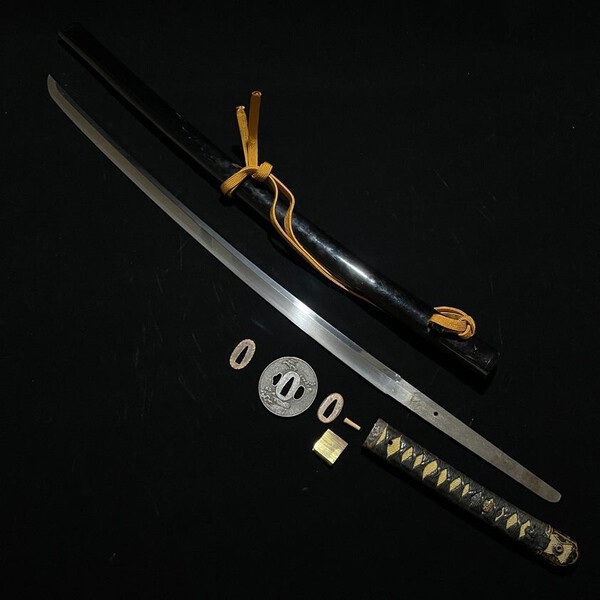


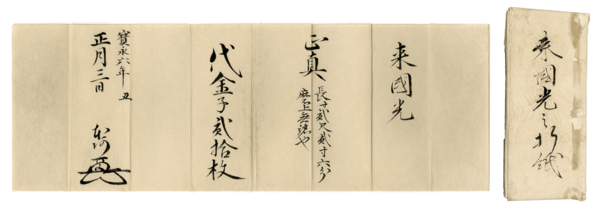

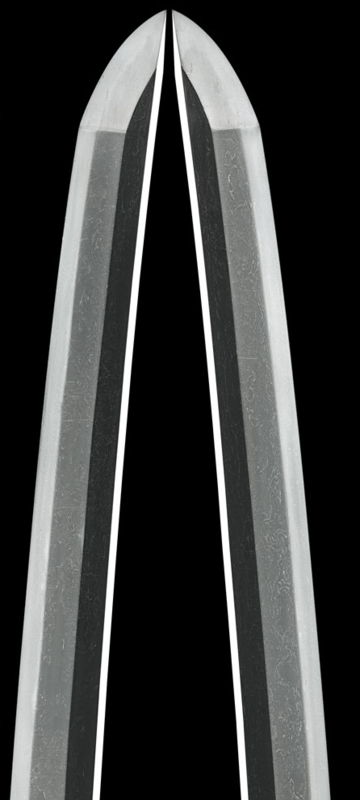
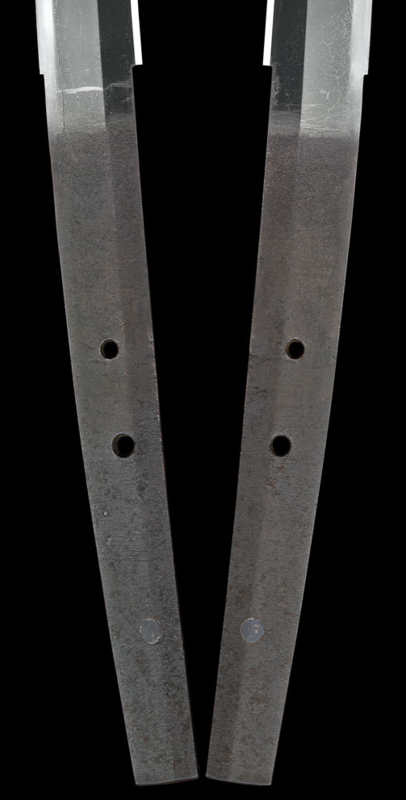
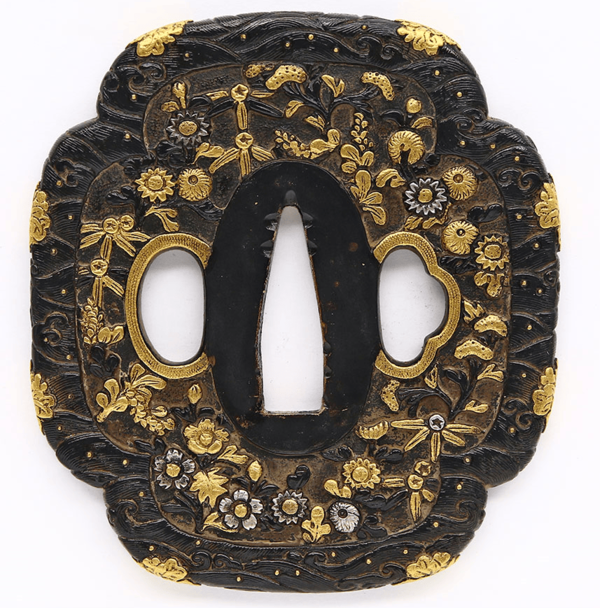


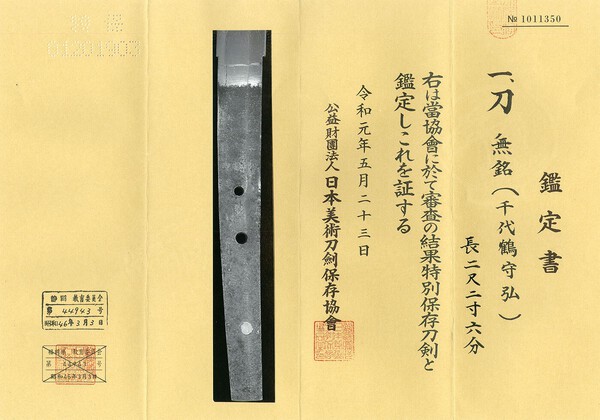
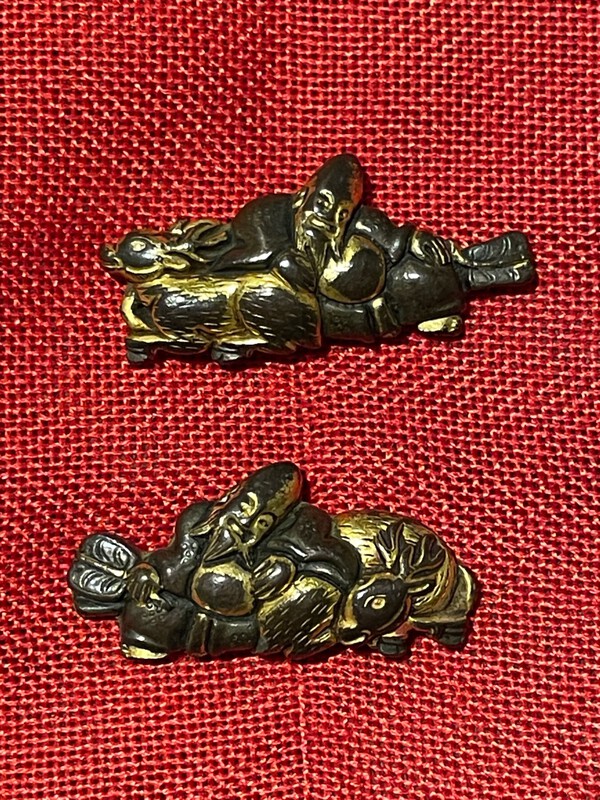
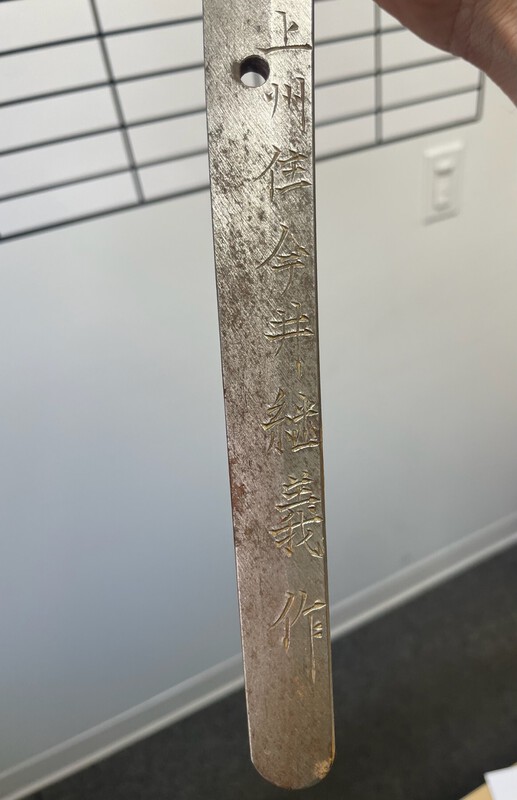
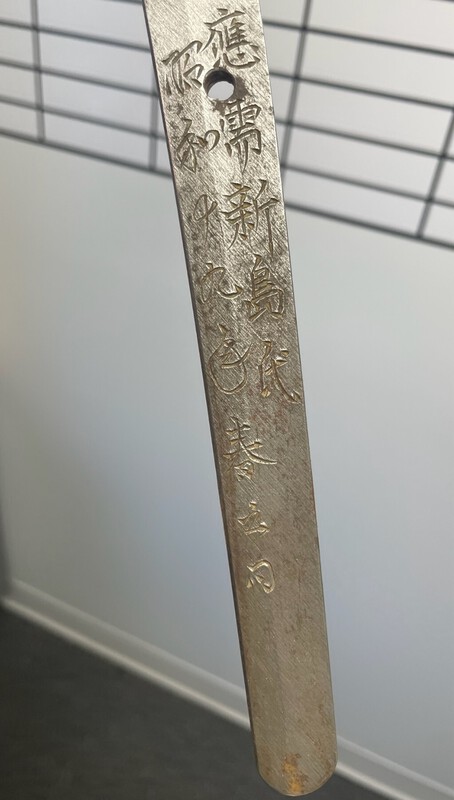



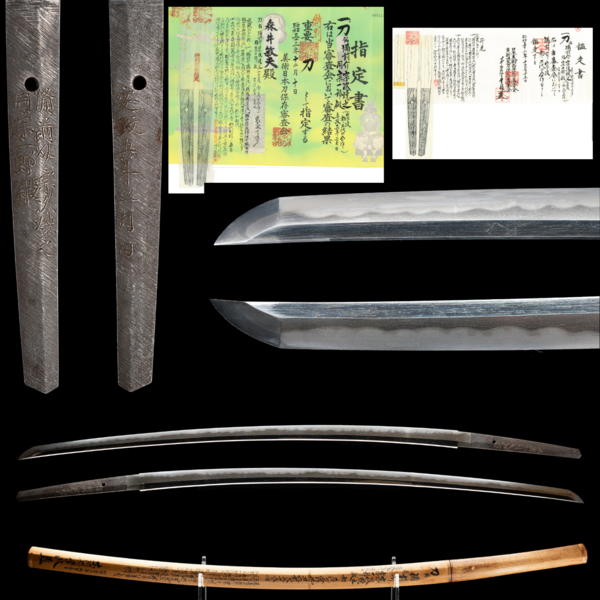
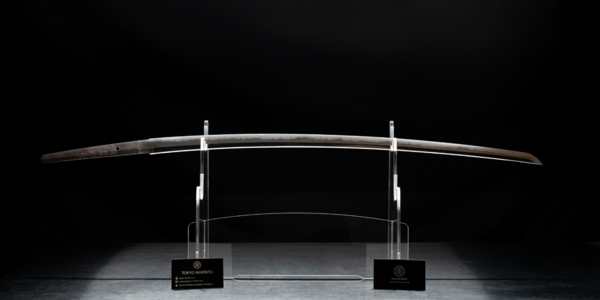
.thumb.png.71e3e6e6c6ad6efc564dcaaf6d081592.png)









